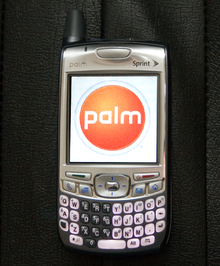Intuitive Surgical's da Vinci robotic surgery platform
Experts convened at FDA headquarters to discuss the challenges and opportunities posed by robotic surgery, and how the agency should regulate devices and tools that enable the new treatment paradigm.
Intuitive Surgical's da Vinci robotic surgery platform is the only such device on the market, though the FDA says competitors are on the way. As evidenced by the meeting, da Vinci has come to define a new category of surgical technology. With nearly 600,000 procedures performed using the device in 2014 (up from 200,000 in 2009), da Vinci is transforming patient care in some surgical specialties, like urology and gynecology procedures, which account for about three-quarters of that volume.
The FDA says robotic surgery devices contain a console or control center by which surgical instruments are controlled using the guidance of a 3-D monitor. An endoscopic camera is also controlled from the monitor. In addition, robotic surgery devices include a bedside cart consisting of hinged mechanical arms, the camera and the surgical instruments that the surgeon controls from the console.
Da Vinci has a broad indication, covering a variety of procedures. The FDA asked a panel of surgeons whether it should create specific indications for use of robotic surgical devices during specific procedures or surgical subspecialties, or stick with a general indication, such as that given to the da Vinci.
Dr. Steven Schwaitzberg of the University of Buffalo said that new data should be required when the device enables a new procedure. Da Vinci has predominantly been used to improve or simplify existing procedures, not to perform newly enabled procedures.
Urologist Dr. Vipul Patel concurred that the FDA shouldn't regulate the arena too closely, saying that would risk deterring innovation. In general, the doctors warned against including specifying surgical methodologies in any potential indications, such as port placement, and said other decisions about when to use the device should be left to clinical judgement.
But Dr. Patel said that use of the robotic surgical devices in pediatric patients merits a specific indication ecause new instrument lengths may be required, among other modifications.
Gynecologist Dr. Arnold Advincula of Columbia University Medical Center said his specialty is not typically considered a general laparoscopic surgical procedure, since it involves special considerations like whether and how to preserve women's fertility.
The da Vinci's broad indication specifically allows use in gynecological surgical procedures and pediatric patients.
The doctors' overall tone suggested they aren't in favor of too much FDA involvement in the emerging device arena. They were fairly skeptical of full-scale randomized clinical trials, and instead suggested that the FDA work with professional medical societies to collect real-world data.
The doctors repeatedly emphasized that surgical outcomes are determined to a large extent by the quality of the surgeon, and not the device or surgical paradigm being deployed. They suggested that data collection efforts include metrics to differentiate between surgeons, a factor that isn't typically considered in studies.
The FDA officials moderating the discussion seemed open to the idea of partnering with medical societies, but were more cautious about including data about individual surgeons in the dataset, which would prove controversial even if the data were anonymized.
Overall, the doctor said robotic surgery devices shouldn't be treated that differently than those used in open or laparoscopic procedures, for all of the tools are designed to perform similar tasks, but using a different methodologies. For example, the panelists said robotic surgery devices should be judged according to whether they can meet standard benchmarks of effectiveness that open and laparoscopic tools are measured against.
The da Vinci was cleared through the FDA's 510(K) process for low to moderate risk devices that have a substantially equivalent predicate device on the market, in this case, laparoscopic holding devices.
The doctors said they are interested in the FDA's handling of upcoming robotic surgery devices. They said future devices are likely to blur the line between laparoscopic and robotic surgery devices, which will make "substantial equivalence" decisions harder. As a result, the devices may require a higher degree of evidence prior to clearance or approval.
Although it's being adopted to perform some types of procedures, da Vinci has proven controversial due some studies (out of hundreds conducted) that have found that the device does not produce many clinical benefits.
In addition, Intuitive Surgical issued a recall of more than 1,300 da Vinci systems in November 2013. Its high cost is another barrier to adoption.
Used appropriately, robotic surgery can simplify some procedures, especially those involving the use of sutures, and lead to improved outcomes for patients. The chief drawbacks for surgeons are the loss of sensory feedback from feeling the surgical site (known as haptics) and a learning curve that disadvantages inexperienced users of the device.
The two-day FDA meeting concludes on July 28. Topics discussed by other panelists include the use of surgical simulators, robotic surgery training programs and newly enabled surgeries.
 It was a smart phone without the smart or the phone. At the time it was a hot item for providers to carry around. It had no connectivity.except for a USB port. There were many programs that were available, for diagnosis, prescription information, and an electronic Rx writer, even medscape had a program that ran on it. In those days there were no "apps" It had an adapter that connected to your computer. That was it's connectivity that could be used for downloading programs, and sending Rxs
It was a smart phone without the smart or the phone. At the time it was a hot item for providers to carry around. It had no connectivity.except for a USB port. There were many programs that were available, for diagnosis, prescription information, and an electronic Rx writer, even medscape had a program that ran on it. In those days there were no "apps" It had an adapter that connected to your computer. That was it's connectivity that could be used for downloading programs, and sending Rxs










